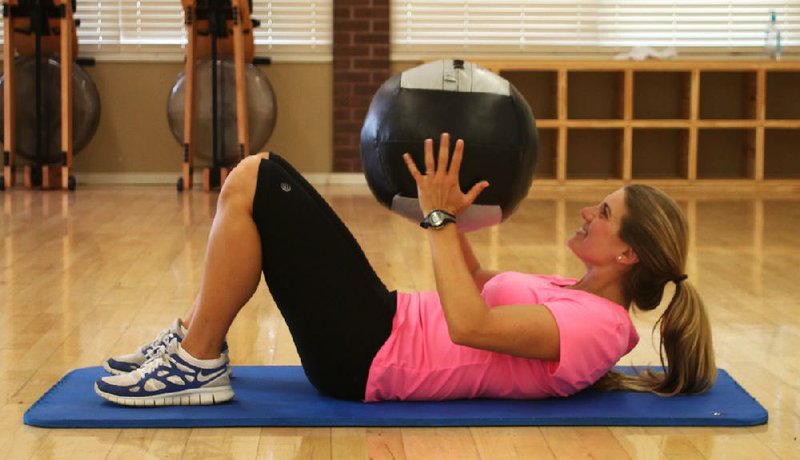Abdominal training is definitely one of the more frequently misunderstood aspects of exercise programming. How should we go about training our abdominals? One publication or expert might recommend doing 1,000 repetitions of every ab exercise while another touts isometric holds.
This week, I'll try to clear up some of this confusion by explaining a few fundamental components of effective abdominal training. Then I'll present an exercise designed to add some variety to even the most familiar abdominal routine.
Working the abdominal musculature is somewhat different from working other muscle groups, simply because of the nature of the human anatomy: Abdominal muscles are grouped in layers. The two strands of the rectus abdominis are the top layer: muscle that bulges into the pocketed shape commonly referred to as a "six pack." It serves as the primary mover when you bend forward, so it's a torso flexor (think about situps).
The oblique abdominals -- muscles that wrap the sides of the torso -- are largely involved in twisting motions.
And the transverse abdominals (transversus abdominis), the deepest layer, lies flat while supporting the torso in dozens of movement patterns.
The key to abdominal training, in my opinion, is to use plenty of variation. The daily duties and interdependent, moving parts of your "core" are so vast and complex that it's impossible to train everything with one movement. And this is where many people make a mistake: They fall in love with one exercise and just keep doing it until the cows come home.
The result is typically an overdeveloped rectus abdominis surrounded by other, neglected core components that are relatively unprepared to play their roles.
I'd much rather see an abdominal program that includes twisting and hip flexion in addition to torso flexion. The best programs also mix up the protocols to include isometric training, traditional eight- to 12-repetition sets, and timed sets to exhaustion. Such plans ensure that the training program includes enough variation to challenge the entire core in many formats.
Once there's enough variation in the training plan, attention turns to repetition quality. Slow, deliberate repetitions performed with excellent postural form should always be the focus. Performing quick, sloppy reps will not only impede your progress, but also put you at greater risk for injury. No one wants that.
This week, I've got a creative exercise that will challenge people of all fitness levels. It's adjustable to accommodate beginners and advanced fitness enthusiasts. The Medicine Ball Brace will seem a little crazy at first, but I think you'll appreciate the end result.
1. Select a medium weight medicine ball and lie on your back on an exercise mat. A ball that's padded will be somewhat more comfortable than one with a hard surface designed for bouncing.
2. Bend your knees and keep your feet flat on the floor.
3. Bring your shoulders up a few inches to help you focus on contracting the abdominals.
4. Hold the ball six to 12 inches above your abdomen while bracing the core.
5. Drop the medicine ball right in the center of your abdominal muscles.
6. Quickly pick it up and drop it again.
7. Continue for 12 repetitions while maintaining core contraction the entire set.
This exercise primarily challenges the rectus abdominis, so you'll want to pair it with other exercises for comprehensive core development. A nice trio might include the Medicine Ball Brace followed by a side plank and then a cable twist. If performed sequentially without rest, you've got a tough little circuit.
Matt Parrott has a doctorate in education (sport studies) and a master's in kinesiology and is certified by the American College of Sports Medicine.
vballtop@aol.com
ActiveStyle on 08/04/2014
